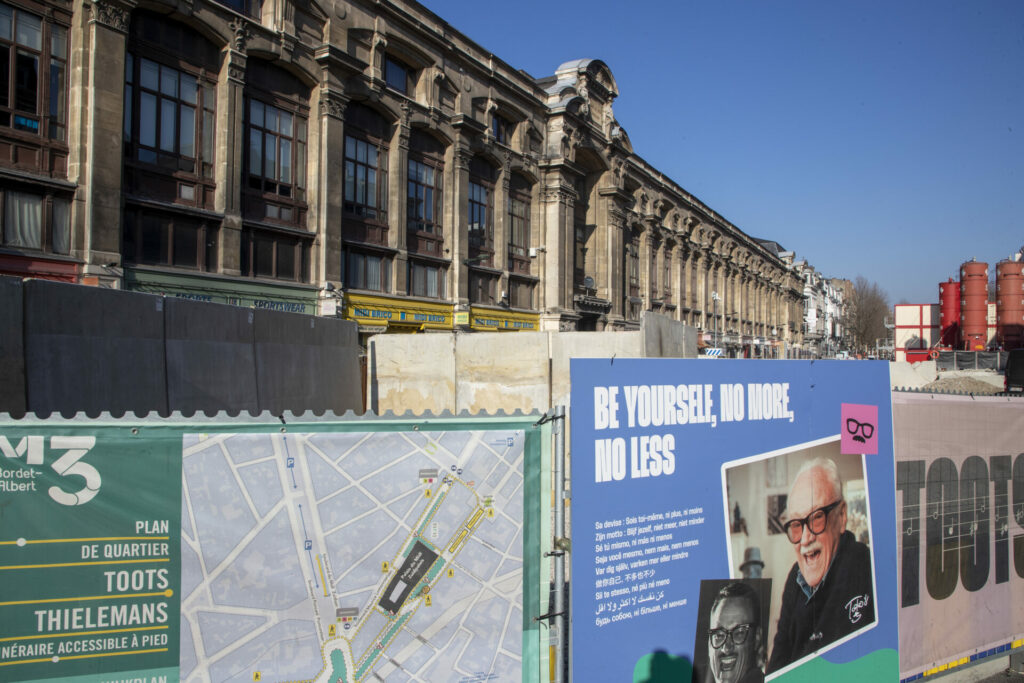Following months of delays, Brussels Minister-President Rudi Vervoort announced that the construction works for Brussels' Metro line 3 can only continue via the inside of the iconic Palais du Midi building, meaning it has to be partially dismantled.
The construction of metro line 3 has been complicated for several months, as a 120-metre-long tunnel needs to be dug underneath the Palais du Midi, located on Boulevard Lemonnier. However, as the conditions underground are not ideal, various possible solutions were proposed, but a decision has now been made.
"The Brussels government and the City of Brussels have taken note of the fact that for technical, financial and time reasons, the dismantling of the interior of the South Palace is the only feasible way to continue the project," Vervoort's office announced in a press release on Thursday.
An urban development procedure will be launched and a support plan will be drawn up, for the district as well as everyone who uses the Palais du Midi.
Getting it done
To better connect the north and the south of the Brussels-Capital Region, STIB and Beliris are currently building the M3 metro line, which will first connect Albert station (Forest) to the Brussels North station, and then the North station to the Bordet one (Evere).
However, in order to connect the future Toots Thielemans station under the Avenue Stalingrad with the existing pre-metro infrastructure at Anneessens, 900 metres of connecting tunnels must be built.
The roof plate of the station is now finished and the excavation of the tunnel has started. But the construction of the 120-metre tunnel that is to run beneath the Palais du Midi has been halted for several months due to technical problems.
"The main thing is to get the project done," said Brussels Minister Bernard Clerfayt on Twitter. "The only solution is to continue the construction site from inside the Palais du Midi. With this decision, I hope that work can resume quickly and that this major project for the mobility of Brussels residents will succeed."
The first foundation elements, made by injecting cement into the subsoil, did not meet the established stability standards. The structure of the still soggy subsoil of the former bed of the Senne is a major technical challenge for the Palais' substructure.
Various alternatives have been proposed, but dismantling the interior of the Palais du Midi (while retaining the facades) to allow the tunnel to be dug from the inside, appears to be "the cheapest, fastest and safest option," the authorities said.
Apart from the preparatory works, the dismantling of the interior of the building will not begin before January 2025. The site will be carefully prepared, and an urban planning procedure will be launched very soon. Those who use the Palais du Midi, as well as nearby residents, will then have the opportunity to be heard again.
Related News
- Construction of Brussels metro line 3 partially halted
- 'Point of no return' for Metro 3 tunnel under Palais du Midi
- Unblocking Metro 3: STIB proposes to dismantle roof of Palais du Midi
In the meantime, the Brussels-Capital Region, the City of Brussels and STIB will make efforts to support the affected people. The schools and sports clubs that currently use the facilities of the Palais du Midi will be relocated. Businesses that also have to move will be able to make use of individually-adapted support measures, and the City and the Region will soon invite affected traders to examine the proposed options.
Additionally, as the Palais du Midi is an iconic building in the Brussels urban landscape, necessary measures will be taken to protect and revalue it at the same time. The facades, which mostly date from the end of the 19th century, will be preserved and the building interior, which is currently in a state of disrepair, will be completely renovated.

